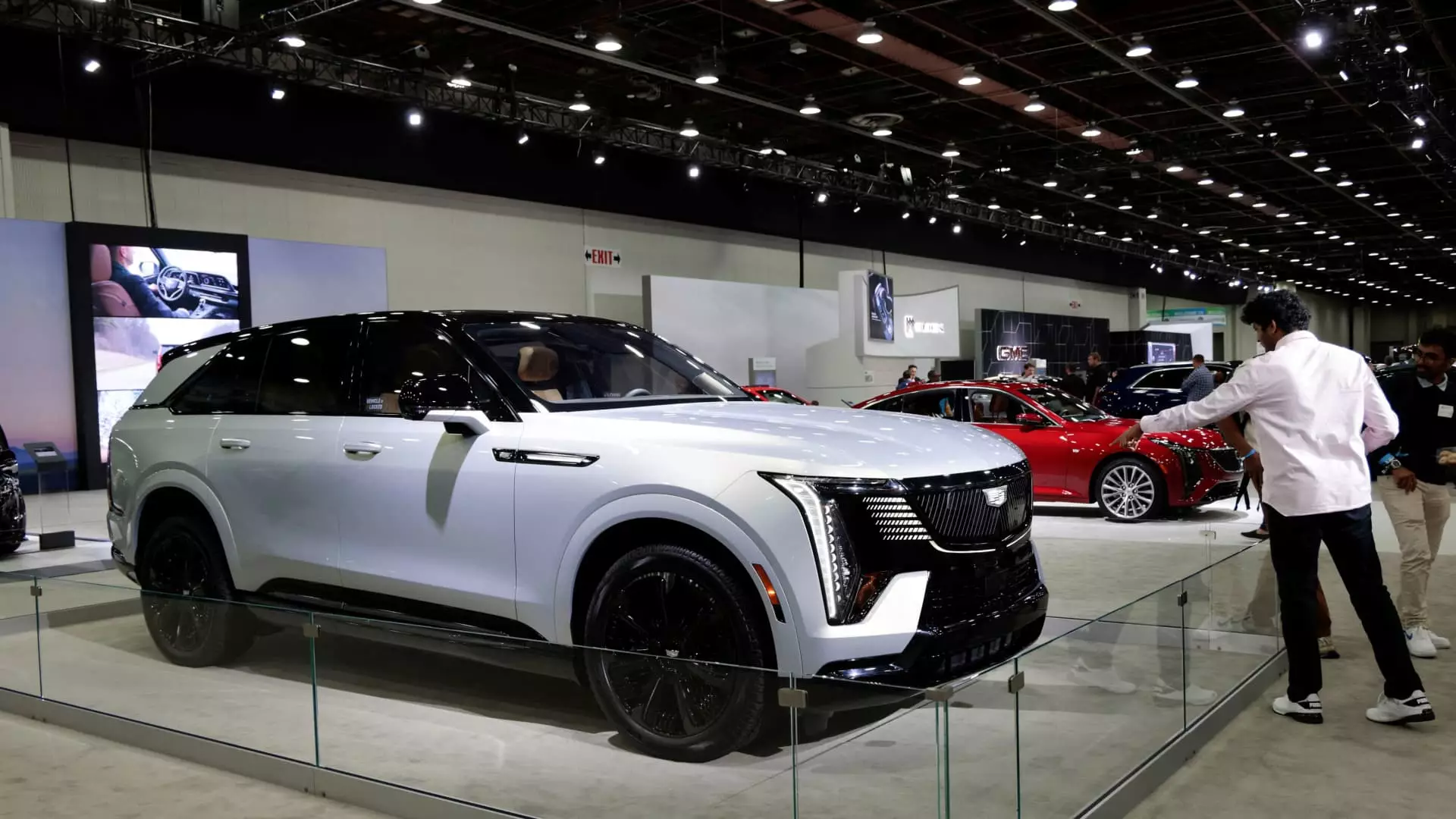In an environment where the competition in the electric vehicle (EV) sector is at an all-time high, Cadillac is experiencing a renaissance that is astonishing, to say the least. As one of America’s storied luxury brands, it has found a compelling opportunity to pivot towards sustainability through an expanding lineup of electric vehicles. The fact that nearly 80% of Cadillac’s new EV buyers are entirely new to the brand underscores a significant shift, revealing a hunger for innovation and change within a market eager for alternatives to traditional automotive offerers. The allure? A tantalizing blend of sophistication and cutting-edge technology, seamlessly packaged into a new electric paradigm.
This shift is partially fueled by the growing disenchantment towards Tesla, spurred on by its controversial leadership under Elon Musk. Reports indicate that approximately one in ten new Cadillac EV customers come directly from trading in their Teslas. Especially striking is the upswing in Tesla owners switching to the Cadillac Lyriq SUV—an increase from prior trade-in rates of 10-15% to a remarkable 25% this year. What does this suggest? It signifies not just a change in allegiance; it’s an awakening to the virtues that Cadillac offers, which are often overshadowed by Tesla’s market dominance.
Musk’s Politics: A Potential Disruptor in the EV Landscape
While Cadillac’s strategy to attract Tesla’s customer base exists in a vacuum of superior product offerings and differentiation, the role of Musk’s politics cannot simply be dismissed. His public support for partisan measures, particularly in the shadow of his involvement with the controversial Department of Government Efficiency, has left many consumers disillusioned. Cadillac dodged questions concerning the link between Musk’s political choices and Tesla’s declining appeal, but the correlation is too salient to ignore. Customers today are increasingly enmeshed in a culture where values and ethics influence purchasing habits, and Cadillac is skillfully positioning itself as a bastion of quality and American luxury without the accompanying political baggage.
Despite these emerging dynamics, it is essential to recognize that loyalty to Tesla runs deep. Tesla owners are not only consumers; they are ardent fans, often reluctant to abandon the brand that championed the notion of electric futures. However, Cadillac’s recent surge indicates that a significant number are willing to make the leap, searching for a fresh aesthetic and technological promise. The question remains whether Cadillac can maintain this momentum or if this shift represents a fleeting trend rather than a substantial rebranding.
The Vibrant Portfolio: Cadillac’s Compelling Offerings
Cadillac’s introduction of a diverse portfolio of electric models is a testament to its long-term vision—a world where luxury and eco-friendliness coalesce harmoniously. From the entry-level Optiq to the high-end Celestiq and expansive versions of the robust Escalade IQ, the balance between aesthetics and functionality is being deftly struck. The allure lies not only in the vehicles themselves but also in Cadillac’s commitment to an excellent user experience. Brad Franz, Cadillac’s global marketing director, succinctly stated that their offerings are not merely vehicles; they are pathways to a sustainable future.
While some argue that buyers are merely fleeing Tesla’s tumultuous recent stumbles, it’s equally valid to contend that consumers are actively seeking what Cadillac promises: dependability, luxury, and a feeling of comfort with their purchase. The Cadillac Lyriq, for instance, has emerged as an industry leader within its segment, suggesting that customers are recognizing the brand’s effort to cater to their needs.
Market Dynamics: The Elusive Cross-Shopping Phenomenon
A curious wrinkle in this story is the apparent disconnect between Tesla and Cadillac in the realm of customer cross-shopping. Despite the rising numbers of Tesla owners making the switch, data reveals that no Tesla model ranks among the top cross-shopped vehicles against Cadillac EVs. Instead, consumers are looking internally at Cadillac’s own offerings or other domestic vehicles. This suggests that many current Tesla owners aren’t prioritizing Tesla alternatives in their search for a new vehicle, indicating a more profound desire to break from the Tesla nexus altogether.
Consumers are often unencumbered by brand loyalty; they are opting for choices that resonate with a desire for renewal rather than searching for direct alternatives. It is a fascinating paradigm that nudges the industry to rethink brand value and consumer behavior. As consumers pivot towards Cadillac, it sparks important conversations about the evolving landscape of luxury electric vehicles, leaving one to ponder if this transition could redefine American automotive expectations fundamentally.
With Cadillac’s ambitious vision steadily taking form, it appears that they are not just following a fleeting trend but shaping a broader narrative in the luxury EV sphere. The journey ahead may indeed be turbulent, but for Cadillac, every twist and turn presents a new opportunity for innovation, positioning it not just as a player but as a potential leader in the contemporary electric vehicle revolution.

